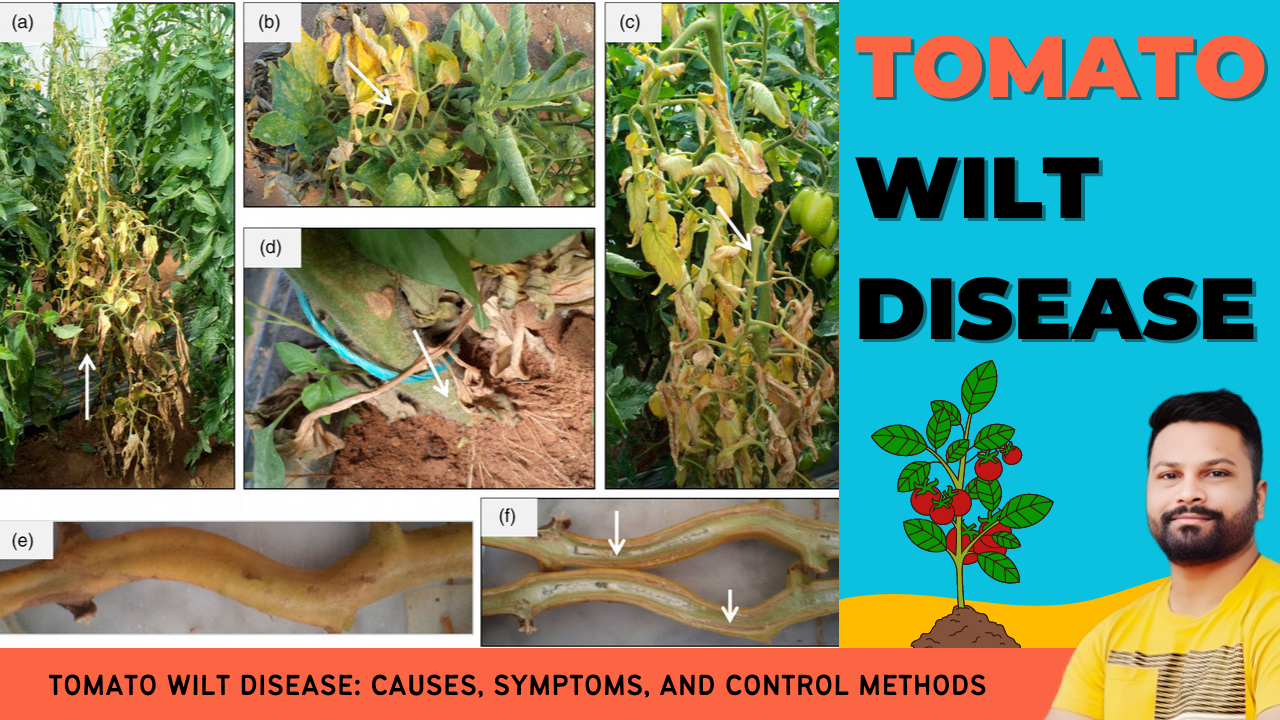
Tomato Wilt Disease: Causes, Symptoms, and Control Methods
Today, we delve into the intricacies of tomato wilt disease, its causes, symptoms, and control measures. Tomato crops are significantly affected by wilt disease, also known as Fusarium wilt, which can also impact various other crops. The primary culprit behind this disease is Fusarium fungi, which can survive in the soil for extended periods. Environmental factors such as increased moisture in the soil and excessive rainfall contribute to the development and spread of this disease.
❇️ Causes of Tomato Wilt Disease
Tomato wilt disease, caused by Fusarium fungi, is a systemic ailment where the pathogens infiltrate the roots of plants, residing in the vascular tissues. They damage the xylem, leading to wilting of leaves, eventual drying of plants, and, with increased infection, plant death. Symptoms of wilt disease are visually striking and can affect plants at any stage of growth.

❇️ Symptoms of Tomato Wilt Disease
Symptoms of tomato wilt disease include:
Initially, symptoms appear as small patches of wilting, gradually spreading across the field, causing plants to wither.
In the early stages, upper leaves of affected plants begin to wilt, affecting the upper surface of leaves.
Affected plants exhibit drooping leaves, disrupting plant structure.
With the progression of the disease, leaves turn yellow, altering the plant's appearance.
If left unchecked, entire plants turn yellow and eventually dry out, with blackened structures visible near the roots.
Dried roots of affected plants easily break upon removal.

❇️ Control Measures for Tomato Wilt Disease
Effective control measures for tomato wilt disease involve:
Deep plowing of fields before planting to eradicate harmful pathogens.
Incorporating 1.5 to 2 kilograms of Trichoderma viride with well-decomposed manure during field preparation.
Treating seeds with 2 grams of Dhanuka Vitavax before sowing in nurseries.
Prompt removal of infected plants from fields upon detection to prevent disease spread.
Employing drenching techniques with Trichoderma viride mixed at 2 milliliters per liter of water to halt disease progression.
❇️ Best Fungicides for Controlling Tomato Wilt Disease
For effective management of tomato wilt disease, consider using the following fungicides:
Dhanuka Dhanustin Fungicide (Carbendazim 50% WP) - 1 gram per liter
UPL Saaf Fungicide (Carbendazim 12% + Mancozeb 63% WP) - 2 grams per liter
Dhanuka Conika Fungicide (Kasugamycin 5% + Copper oxychloride 45% WP) - 2 grams per liter
Syngenta Ridomil Gold Fungicide (Metalaxyl 8% + Mancozeb 64% WP) - 2 grams per liter
Biostadt Roko Fungicide (Thiophanate methyl 75% WP) - 2 grams per liter
Dhanuka Zenet Fungicide (Thiophanate methyl 44.8% + Kasugamycin 2.6% SC) - 2.5 milliliters per liter
📢 Note: For optimal results, adjust fungicide application based on the severity of tomato wilt disease and the extent of infection, utilizing drip or drenching methods as appropriate.
✅ Conclusion:
Tomato wilt disease remains a significant challenge for tomato growers worldwide, causing substantial economic losses. However, by implementing integrated disease management strategies, including cultural practices, biological control, and judicious use of fungicides, farmers can effectively mitigate the impact of Fusarium wilt and safeguard their tomato crops. Stay informed, vigilant, and proactive in combating tomato wilt disease to ensure a successful harvest season.
✍️ Writer
Dynamic Sales & Marketing Executive in Agriculture: Building Strong Retail & Farmer Relationships | Fertilizers | Specility Ferilizers
1moVery useful